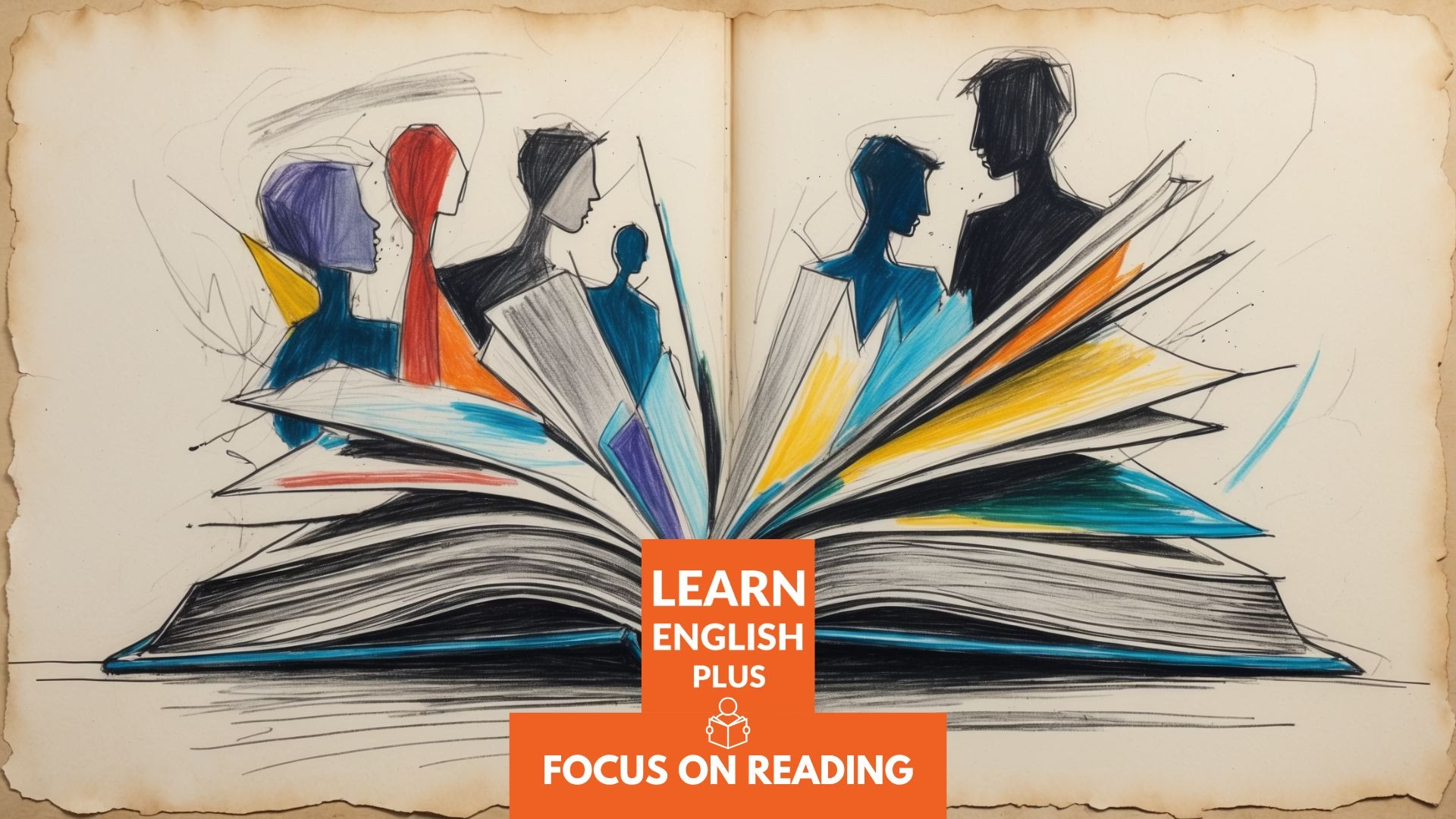Introduction
Welcome back to our Reading Practice Program! Today, we will be examining the fascinating interplay between narrative techniques and the formation of identity, a topic often explored in the reading sections of international exams. This passage will test your ability to understand abstract literary concepts, analyze how authors use language, and synthesize information to draw conclusions.
To enhance your reading skills, remember these strategies:
- Identify the Author’s Purpose: What is the author trying to achieve by writing this passage? Are they informing, persuading, or analyzing?
- Analyze Text Structure: How is the passage organized? Are there clear topic sentences and supporting details?
- Pay Attention to Figurative Language: Authors often use metaphors, similes, and other literary devices to convey meaning.
- Consider Different Perspectives: Does the passage present multiple viewpoints or focus on a single perspective?
- Make Inferences: Sometimes, the answer to a question is not directly stated in the text but needs to be inferred.
We suggest you allocate approximately 15-20 minutes to read the passage and answer the following 10 questions. This will help you practice managing your time effectively during your exams. Let’s begin!
Reading Passage | Shaping Stories, Shaping Selves
The human experience is fundamentally narrative. We make sense of the world and our place within it by constructing and sharing stories. These narratives, whether personal anecdotes, historical accounts, or fictional tales, are not merely neutral recountings of events; they are shaped by various narrative techniques that significantly influence how we perceive ourselves and others, ultimately playing a crucial role in identity formation.
One of the primary narrative techniques impacting identity is point of view. The perspective from which a story is told – first person (“I”), second person (“you”), or third person (“he/she/it”) – dictates the reader’s access to characters’ thoughts, feelings, and experiences. A first-person narrative, for instance, offers an intimate and subjective view, allowing for a deep connection with the narrator’s identity as it unfolds. Conversely, a third-person omniscient perspective provides a broader view, potentially revealing insights into multiple characters and their intersecting identities.
Another powerful technique is the use of setting. The time and place in which a narrative unfolds can profoundly shape characters’ identities and the themes explored. A character growing up in a war-torn environment will likely develop a different sense of self than someone raised in affluence. The cultural norms, social structures, and even the physical landscape of the setting can act as formative influences on identity.
Characterization, the way an author develops and portrays characters, is also central to identity formation in narratives. Through direct descriptions, actions, dialogue, and interactions with other characters, authors reveal the complexities of individual identities. Readers often identify with characters whose experiences or traits resonate with their own, leading to a deeper understanding of themselves and others. The journeys and transformations of characters within a narrative can mirror or challenge aspects of the reader’s own identity.
Furthermore, the use of plot and pacing can influence how identity is perceived. The sequence of events, the conflicts characters face, and the speed at which the story unfolds can highlight different facets of their identities. A narrative with a slow, introspective pace might delve deeply into a character’s internal struggles and evolving sense of self, while a fast-paced plot might emphasize external challenges and how characters react under pressure, revealing different aspects of their identity.
Theme, the underlying message or idea of a narrative, also contributes to identity formation. Stories often explore universal themes such as love, loss, belonging, and the search for meaning. Engaging with these themes through narratives can prompt readers to reflect on their own values, beliefs, and sense of identity. The resolutions or lack thereof in a narrative can offer insights into different ways of understanding and navigating the complexities of identity.
In conclusion, narrative techniques are not merely stylistic choices; they are fundamental tools that authors use to construct and explore the multifaceted nature of identity. By carefully manipulating point of view, setting, characterization, plot, pacing, and theme, narratives shape our understanding of ourselves and the world around us, playing an indispensable role in the ongoing process of identity formation.
Glossary
- Interplay: The way in which two or more things have an effect on each other. Usage in the reading: “…examining the fascinating interplay between narrative techniques and the formation of identity…”
- Neutral recountings: Objective and unbiased descriptions of events. Usage in the reading: “These narratives…are not merely neutral recountings of events…”
- Dictates: Controls or determines something. Usage in the reading: “…point of view…dictates the reader’s access to characters’ thoughts…”
- Intimate and subjective view: A close and personal perspective that is influenced by personal feelings or opinions. Usage in the reading: “A first-person narrative…offers an intimate and subjective view…”
- Omniscient perspective: A viewpoint in which the narrator knows all the thoughts, feelings, and experiences of all the characters in the story. Usage in the reading: “…a third-person omniscient perspective provides a broader view…”
- Profoundly shape: To influence or affect deeply. Usage in the reading: “The time and place…can profoundly shape characters’ identities…”
- Affluence: The state of having a lot of money or possessions; wealth. Usage in the reading: “…than someone raised in affluence.”
- Formative influences: Things that have a significant impact on the development of someone’s character or identity. Usage in the reading: “The cultural norms…can act as formative influences on identity.”
- Portrays: Describes or represents something or someone in a particular way. Usage in the reading: “Characterization, the way an author develops and portrays characters…”
- Resonate with: To strike a chord with someone; to remind them of their own experiences or feelings. Usage in the reading: “Readers often identify with characters whose experiences or traits resonate with their own…”
- Mirror or challenge: To reflect or question something, in this case, aspects of the reader’s identity. Usage in the reading: “The journeys and transformations of characters…can mirror or challenge aspects of the reader’s own identity.”
- Introspective pace: A rhythm or speed in a narrative that encourages inward reflection and examination of thoughts and feelings. Usage in the reading: “A narrative with a slow, introspective pace might delve deeply…”
- Delve deeply into: To examine or inquire into something thoroughly and carefully. Usage in the reading: “…might delve deeply into a character’s internal struggles…”
- Facets of their identities: Different aspects or parts of who they are. Usage in the reading: “…can highlight different facets of their identities.”
- Underlying message: The implicit or hidden meaning of something. Usage in the reading: “Theme, the underlying message or idea of a narrative…”
- Prompt readers to reflect: To encourage or cause readers to think deeply about something. Usage in the reading: “Engaging with these themes…can prompt readers to reflect on their own values…”
- Resolutions or lack thereof: The outcomes or the absence of solutions to the conflicts in a narrative. Usage in the reading: “The resolutions or lack thereof in a narrative can offer insights…”
- Multifaceted nature of identity: The many different aspects and characteristics that make up someone’s sense of self. Usage in the reading: “…explore the multifaceted nature of identity.”
- Manipulating: Handling or controlling something skillfully. Usage in the reading: “By carefully manipulating point of view, setting, characterization, plot, pacing, and theme…”
- Indispensable role: An absolutely necessary or essential part. Usage in the reading: “…playing an indispensable role in the ongoing process of identity formation.”










0 Comments